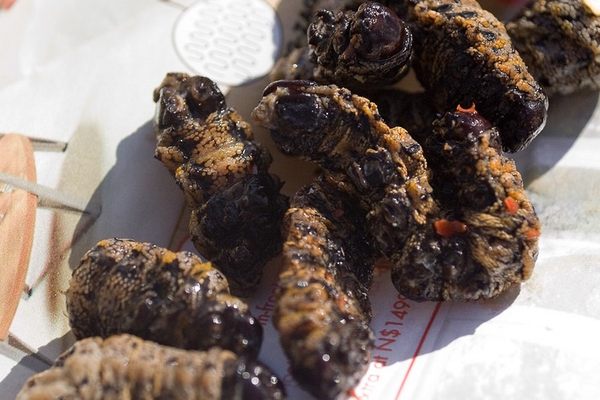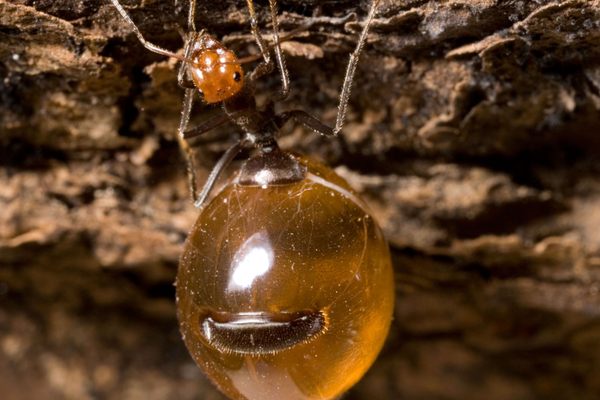Prepared Foods
Ugali with Termites
Kenya's classic corn porridge becomes the ideal pairing for crunchy, roasted insects.
When it rains in Kenya, men, women, and children get to work cultivating a special treat: insects. They use branches to create mud traps outside the mounds where chiswa or tsiswa (termites) live. If it’s not raining, they’ll lightly tap the branches to mimic the sound of rainfall, coaxing termites out of the ground and into the traps. More advanced harvesting efforts involve smoking termites out with lighters or covering the mound’s main exit, forcing them to escape through man-made holes into similar mud traps. Back home, cooks roast termites with salt until they turn a dark brown color, then serve them with another local favorite: ugali.
Made from white maize flour and boiling water, ugali is like a cross between polenta, porridge, biscuits, and cornbread. The mild flavor may not wow when served solo, but it’s a great accompaniment for stews, curries, and roasted termites. The dough-like dish originated in the 19th century, when Portuguese traders first brought maize to Kenya. Maize was a welcome change from grains such as sorghum and millet, and quickly exploded in popularity. Ugali is so important to the Kenyan community that it’s referenced in a Kiswahili proverb: Kupyanja iti kulumanga, which means “to dip ugali in gravy is better than to be without gravy at all.”
Ugali with termites is a simple, pleasantly crunchy meal with a hint of sweetness. It’s rich in omega-3 fatty acids, iron, and vitamin A. To eat it properly, you’ll have to be willing to get your hands dirty. Pinch a small piece of ugali between your fingers, roll it into a ball, and make an indentation with your thumb for scooping the roasted termites.
Written By
 ElizabethAnneSmith
ElizabethAnneSmith
Sources
- www.saveur.com/a-meal-to-remember-termites-in-kenya
- www.bioversityinternational.org/e-library/publications/detail/safeguarding-intangible-cultural-heritage-traditional-foodways-of-the-isukha-community-of-kenya/
- www.theguardian.com/lifeandstyle/wordofmouth/2008/dec/12/ugali-masai-african-food
- theculturetrip.com/africa/kenya/articles/a-brief-history-of-kenyan-dish-ugali/
- www.smallstarter.com/browse-ideas/top-4-most-eaten-insects-in-africa-and-why-insect-farming-is-a-huge-business-opportunity/
- www.congocookbook.com/staple_dish_recipes/ugali.html
- allafrica.com/stories/201701090768.html













